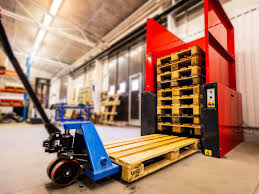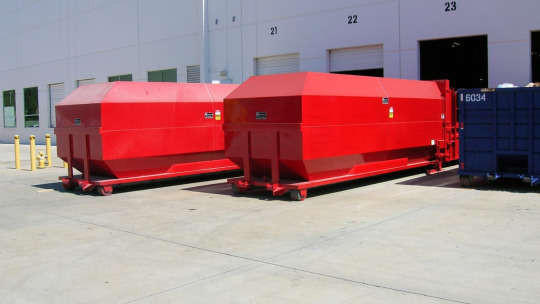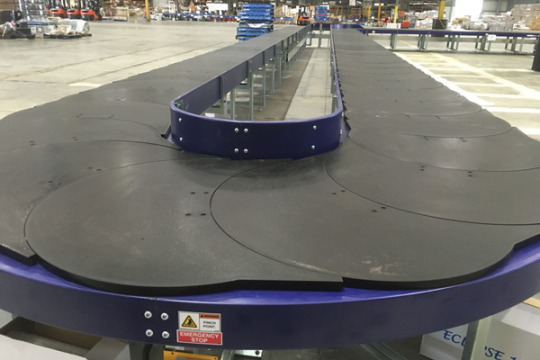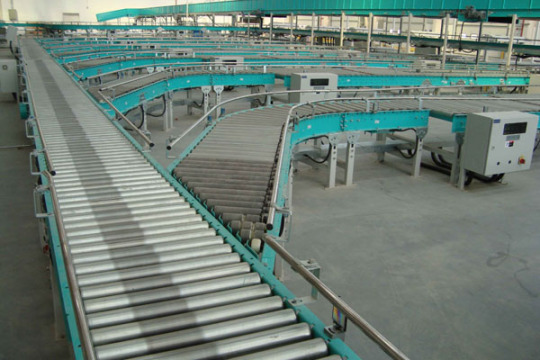#Automation Conveyor Systems
Explore tagged Tumblr posts
Text
#Truck loading conveyor system manufacturer#Vertical lift for material handling manufacturer#Flow wrap machine for FMCG packaging manufacturer#Vertical reciprocating conveyor (VRC) manufacturer#Goods lift manufacturer India#Industrial conveyors for packaging lines manufacturer#End-of-line packaging solutions manufacturer#Smart packaging and conveyor integration manufacturer#Heavy-duty goods lifts manufacturer#Automated truck loading and unloading system manufacturer#Conveyor belt manufacturer#Horizontal flow wrap machine India manufacturer#Horizontal packaging machine for high-speed wrapping manufacturer#Industrial palletizing and packaging line manufacturer#Intralogistics solutions manufacturer#Telescopic boom conveyor manufacturer#Telescopic conveyor for truck loading manufacturer#Warehouse automation manufacturer#FMCG packaging machinery manufacturer
0 notes
Text

0 notes
Text
Automated Order Picking System Manufacturer | Conveline Rollers

Conveline Systems Pvt Ltd, based in Ahmedabad since 2014, excels as a manufacturer of automated order-picking conveyor systems and intralogistics solutions. Their expert team designs modular belt, roller, pallet and motorised-roller conveyors engineered for seamless integration with robotics and manual operations. Deployed across food, pharmaceuticals, warehousing, logistics and general manufacturing, Conveline’s precision systems optimize material flow, boost productivity, and cut handling costs. With global exports and a robust support network, they deliver custom, high-efficiency automation tailored to diverse industry needs. Visit us: https://www.convelinerollers.com/order-picking-system
0 notes
Text
Truck Loading Conveyor Manufacturers in Faridabad: Leaders in Innovation
Looking for cutting-edge truck loading conveyor solutions? Discover why Faridabad is the heart of conveyor manufacturing in India. Home to industry-leading companies, Faridabad-based manufacturers are known for their technological innovation, customized designs, and cost-effective solutions for modern logistics and warehousing.
From telescopic conveyors to hydraulic truck loaders, these manufacturers are empowering India’s supply chains with faster, safer, and more efficient material handling systems. Whether you're in e-commerce, FMCG, agriculture, or manufacturing, these conveyors are engineered to deliver unmatched performance.

#truck loading conveyor#Faridabad manufacturers#conveyor systems India#telescopic conveyor#hydraulic loading conveyor#material handling India#warehouse automation#belt conveyor#loading solutions India
0 notes
Text
Chain Conveyor Manufacturer in Faridabad | Vashnavi Conveyor Industry
Vashnavi Conveyor Industry is a leading chain conveyor manufacturer in Faridabad, offering rugged and reliable solutions for heavy-duty material handling across manufacturing and assembly lines. Our chain conveyors are built for strength, durability, and smooth operation, ideal for industrial automation and large-scale production setups.

#Chain conveyor Faridabad#conveyor manufacturer Faridabad#Vashnavi Conveyor#industrial chain conveyor#heavy-duty conveyor#material handling systems#automation conveyors
0 notes
Text
Efficient Warehousing Starts with the Right Pallet Dispenser
In modern warehousing and logistics, efficiency is no longer optional—it’s essential. A key component in streamlining material handling operations is the pallet dispenser. Often working in tandem with a pallet stacker, this equipment automates one of the most overlooked steps in warehouse workflows: dispensing and stacking pallets.

What Is a Pallet Dispenser?
A pallet dispenser is a mechanical device designed to automatically release or stack pallets without the need for manual handling. Commonly used in distribution centers, manufacturing plants, and packaging lines, these machines reduce downtime and improve worker safety by minimizing manual lifting.
Pallet dispensers can handle wooden, plastic, and sometimes even metal pallets, and they come in various configurations—floor-mounted, overhead, or integrated into conveyor systems.
Why Warehouses Are Turning to Pallet Dispensers
As labor shortages and operational costs continue to impact supply chain dynamics, automation is becoming an integral part of warehouse optimization. Pallet dispensers, when combined with pallet stackers, can lead to significant improvements in:
Productivity: Continuous feed of pallets eliminates manual placement delays.
Safety: Reduces the risk of injuries related to lifting and moving heavy pallets.
Consistency: Ensures uniform pallet handling, reducing operational errors.
“Since we implemented a pallet dispenser and stacker combo, our warehouse throughput has improved by nearly 30%. It’s reduced both idle time and workplace injuries.” — Carlos M., Logistics Manager, Northern Freight Solutions
Pallet Dispenser vs. Pallet Stacker: Understanding the Difference
While both are used in handling pallets, their functions differ:

Integrating both systems creates a closed-loop pallet management solution, minimizing idle time and maximizing operational flow.
Use Cases Across Industries
Pallet dispensers are not industry-specific. They are used in:
Food & Beverage: For maintaining hygiene and preventing contamination through minimal contact.
Pharmaceuticals: Ensuring consistent pallet availability during automated packaging.
Retail Distribution: Speeding up order fulfillment operations.
Automotive: Managing heavy-duty pallets for parts and components.
How to Choose the Right Pallet Dispenser
Selecting the ideal pallet dispenser depends on several operational factors:
Pallet Type and Size: Compatibility with standard or custom pallet dimensions.
Capacity: Number of pallets handled per cycle or per hour.
Integration Requirements: Whether it needs to work alongside conveyors, robots, or pallet stackers.
Space Constraints: Floor-mounted vs. overhead models depending on available warehouse space.
“Choosing a dispenser that integrates easily with our conveyor line made a significant difference. It wasn’t just about the machine—it was about how well it fit into our existing layout.” — Stephanie T., Plant Supervisor, Midstate Manufacturing Co.

Maintenance and Lifecycle Cost
Though typically low-maintenance, routine checks on mechanical parts, sensors, and hydraulic components are essential for longevity. Many dispensers offer diagnostics features to alert users of wear and tear, further reducing downtime.
Here’s a general overview of cost expectations: Pallet Dispenser

Final Thoughts
For operations seeking to reduce manual labor, enhance safety, and improve throughput, a pallet dispenser paired with a pallet stacker offers a robust, scalable solution. With proven applications across diverse industries, it's clear that these machines are more than just convenience—they're a strategic investment in productivity.
0 notes
Text
How to Choose the Right Conveyor System for Your Industry

Conveyor systems play a huge role in the spread of productivity, safety issues minimization, and material handling optimization in most industries. Whether it is manufacturing, packaging, food processing, or logistics, the appropriate conveyor system is of prime importance while maximizing business processes. Having such a long list to pick from, the crucial thing to determine is which among these fields will influence your choice. Below are the rules for selecting the best conveyor system for your line of business.
1. Understand Your Industry’s Needs
Start by defining the specific requirements of your business. Different businesses have diverse types of conveyors and material handling, and your conveyor must be able to accommodate these requirements for peak performance.
Conveyors used in manufacturing must be heavy-duty to handle bulky, heavy materials.
Conveyors used in food processing must be sanitary.
E-commerce shipping conveyors must be automated and speedy to handle volumes of packages.
Consider factors like:
Weight and size of the items
Production throughout (how much material needs moving per hour)
Operating environment (hygienic, temperature-controlled, or heavy-duty)
Space available for system integration
2. Evaluate Different Types of Conveyor Systems
Once you know your requirements, it’s time to explore the different types of conveyor systems. Some common options include:
Belt Conveyors: Best suited for light-weight to medium-weight materials. Used most in food processing, electronics assembly, and packaging.
Roller Conveyors: Perfectly suited for bulkier loads such as pallets, usually deployed in warehouses.
Chain Conveyors: Suitable for hard-core items such as metal shavings or car parts. Most robust and most resilient.
Decline and Incline Conveyors: Utilized to transfer goods from one plane to another throughout a factory floor or warehouse complex and remove manpower.
Automated Guided Vehicles (AGVs): Sophisticated, automated machines that are inexpensive and multi-functional.
3. Automation and Advanced Features
When it comes to efficiency, automated conveyors will be your lifesavers. Smart conveyors track real-time movement, decrease downtime, and optimize product flow with Programmable Logic Controllers (PLCs) and IoT sensors. For example, for conveyors and material handling in warehouses, smart conveyors with sensors streamline sorting and routing. Completely automated material handling systems even use robotic arms for pick-and-place operation to ensure improved speed and accuracy of packing.
4. Industry-Specific Conveyor Solutions
Every industry has unique needs. Some industrial conveyor solutions are designed specifically to meet these requirements. For example:
Manufacturing: Heavy-duty conveyors like chain-driven live rollers (CDLR) or high-speed pallet conveyors transport heavy and bulky loads and so they are the best conveyor system for manufacturing.
Packaging: Wondering how to choose a conveyor for packaging? Accumulation conveyors or drag chain conveyors offer excellent good movement with machinery.
Food and Drink: Sanitary conveyors easy to clean and corrosion-resistant are required for food processing to ensure hygiene and keep away contaminants.
5. Consider Maintenance and Durability
Reliability is the top priority. Select a conveyor system which requires less maintenance and is easy to repair. Modularity is best, since they can be re-configured easily to accommodate evolving needs. This provides long-term value and minimum possible disruption to your business.
6. Initial Cost and Return on Investment (ROI)
Consider the initial expense and long-term cost savings. An effectively designed conveyor system saves labor, saves time, and eliminates mistakes. Ultimately, the correct conveyor system will earn its money back in the form of enhanced efficiency and reduced operational expenses.
0 notes
Text
#PneumaticConveying#IndustrialFabrication#ConveyingSystems#FabricationExperts#HighQualityManufacturing#EngineeringSolutions#MaterialHandling#PneumaticSolutions#Automation#IndustrialInnovation#pneumatic conveyor systems#lump breaker#bulk materials handling#macawberindia#bulkmaterialhandling#dense phase pneumatic conveying system#macawber engineering
0 notes
Text
Streamlining Industrial Success With Reliable Spare Parts Supply
The industrial sector relies on the effectiveness of its processes and machinery; hence, spare parts suppliers are the backbone of this success. These suppliers provide key parts that keep production lines rolling without any form of delay. Their main priority is to deliver high-quality parts that meet industrial standards while focusing on timeliness. This way, industries can continue without being interrupted, minimize downtime, and maintain operational integrity. With a well-established network, a Spare Parts Supplier for the Industrial Sector helps to streamline procurement and logistics for industries worldwide.
Their solutions cater to diverse operational challenges, from filtration systems to specialized machinery components. Suppliers are a vital part of operational success, combining experience, efficiency, and technological knowledge. Businesses rely on their expertise to quickly access the right spare parts when needed, empowering industries to thrive even in unforeseen disruptions. Through trusted supply chains and industry partnerships, they provide strategic solutions that sustain industries’ global demand.
#Control and automation systems Offenburg#VBN Hydraulic equipment#Conveyor equipment Offenburg#spare parts Supplier for industrial sector#industrial automation service providers#flexible export solutions offenburg#industrial spare parts
0 notes
Text
Hanging System Painting Line
The Hanging System Painting Line is an automated production line for spraying the surface of central air-conditioning shells and tubes. The hanging system ensures that the workpiece can move smoothly during the spraying process, ensuring the uniformity and quality of the spraying. The automated hanging spraying line can operate continuously, greatly improving production efficiency. It is widely used in central air-conditioning manufacturers, refrigeration equipment manufacturers and other fields. #factory #oem #odm #fyp #coatingline #paintingline #sprayingline #homeappliance coating line
#factory#oem#odm#fyp#coatingline#paintingline#sprayingline#homeappliance coating line#Metal Spraying Line#metal painting line#automated painting line#automatic spraying equipment#overhead conveyor system#Home appliance coating line
0 notes
Text
#Truck loading conveyor system manufacturer#Vertical lift for material handling manufacturer#Flow wrap machine for FMCG packaging manufacturer#Vertical reciprocating conveyor (VRC) manufacturer#Goods lift manufacturer India#Industrial conveyors for packaging lines manufacturer#End-of-line packaging solutions manufacturer#Smart packaging and conveyor integration manufacturer#Heavy-duty goods lifts manufacturer#Automated truck loading and unloading system manufacturer#Conveyor belt manufacturer#Horizontal flow wrap machine India manufacturer#Horizontal packaging machine for high-speed wrapping manufacturer#Industrial palletizing and packaging line manufacturer#Intralogistics solutions manufacturer#Telescopic boom conveyor manufacturer#Telescopic conveyor for truck loading manufacturer#Warehouse automation manufacturer#FMCG packaging machinery manufacturer
0 notes
Text
0 notes
Text
How Inventory Shelving Systems and Warehouse Fitting Drive Operational Streamlining
One of the most important objectives for companies that want to keep their competitive edge and satisfy the ever-changing requirements of the market is to streamline their operations and improve the efficiency with which they manage their inventory and warehouses' operations. When it comes to establishing operational excellence, one of the most important factors is the integration of advanced systems for inventory management and warehouse fittings, such as inventory shelving systems. This paper investigates the significance of implementing integrated systems that not only maximize the efficiency of storage solutions but also guarantee that warehouse operations are carried out without any gaps.

A Brief Introduction to Integrated Systems for the Management of Inventory and Warehouse Conditions
The idea of integration is the fundamental component of a strategy for managing inventory and warehouses that is effective and well-organized. The goal of integrated systems is to create a unified platform that consolidates a variety of operational operations, such as managing order fulfillment and shipping, tracking inventory levels, and so on. Through the utilization of technology, these systems guarantee that every component of the warehouse, including inventory storage systems and warehouse fittings, functions in harmony to facilitate the streamlining of operations and the enhancement of production efficiency.
Role of Inventory Shelving Systems
Inventory shelving solutions are critical for maximizing the storage and accessibility of items in a warehouse. These systems are intended to maximize space usage, improve inventory visibility, and provide quick access for picking and stocking processes. Businesses that use adjustable and modular shelf solutions may alter their storage spaces to fit a wide range of product sizes and quantities, saving waste and enhancing overall warehouse management.
The integration of inventory shelving systems with warehouse management software enables real-time inventory level and location tracking. This harmonization ensures that inventory data is constantly current, decreasing errors in order fulfillment and the danger of stockouts or overstocking. Furthermore, by designing shelf systems to be compatible with automated picking solutions, organizations can drastically reduce the time and manpower necessary for inventory management, hence increasing operational efficiency.
Warehouse Fitting for Improved Operations
Warehouse fitting is the strategic design and layout of warehouse areas to improve the flow of goods from reception to shipment. This includes the design of shelving systems, the location of picking and packing stations, and the integration of conveyor belts and other automated systems. The purpose of warehouse fitting is to establish an atmosphere that allows for effective operation processes, shortens handling times, and lowers warehouse personnel migration.
The implementation of integrated systems in warehouse fittings can have a considerable impact on order fulfillment speed and accuracy. For example, a well-designed warehouse plan that incorporates smart shelving solutions and automated conveyor systems can speed up the transportation of items through the warehouse, from storage to the packing room, and finally to the shipping dock. This not only speeds up the order fulfillment process, but also decreases the possibility of errors and damage to items.
The advantages of integration
The integration of inventory storage systems and warehouse fittings into a single management system provides various advantages. These include increased inventory accuracy, more efficient space utilization, lower operational expenses, and more customer satisfaction. By offering real-time visibility into inventory levels and improving the flow of items throughout the warehouse, firms can better satisfy customer requests and adjust to market changes.
Furthermore, integrated systems make data collecting and analysis easier, allowing firms to see patterns, estimate demand, and make informed decisions about inventory purchases and warehouse operations. This data-driven approach to inventory and warehouse management not only boosts operational efficiency, but it also aids strategic planning and corporate expansion.

Challenges and Considerations
Even while it is obvious that integrating inventory systems and warehouse fitting will result in a number of benefits, the implementation of such systems is not without its difficulties. The initial cost of investment, the difficulty of integrating new technologies with current systems, and the requirement to train workers in order to successfully use and maintain the integrated system are some examples of these potential challenges. To guarantee a seamless transition and achieve the highest possible return on investment, businesses need to give serious consideration to the aforementioned aspects and plan their implementation strategy.
The Finalization
When it comes to inventory and warehouse management, it is crucial for firms that want to achieve excellence in inventory and warehouse management to integrate inventory systems and warehouse fittings into a unified management approach. Not only can integrated systems improve operational efficiency, but they also contribute to improved customer satisfaction and corporate growth. This is because integrated systems optimize storage solutions and enhance the efficiency of warehouse operations while simultaneously improving operational efficiency. It is without a doubt that the implementation of integrated systems will become increasingly important for organizations that are striving to preserve their competitiveness in the ever-changing market landscape as technology continues to advance.
#inventory shelving systems#automated shelving systems#custom fitting solutions#shop fitting equipment#merchandising solutions#display shelving systems#shelving systems#warehouse fittings solutions#warehouse fitting manufacturer#retail display manufacturers#warehouse fitting equipment manufacturer#warehouse fitting#shopfitting warehouse shelves#workspace planners#warehouse planners#warehouse management#integrated systems#inventory systems#inventory storage systems#automated conveyor systems
0 notes
Text
Waste Management And Recycling
Looking for effective waste management and recycling solutions? The Mark Costello Co offers comprehensive waste management and recycling services tailored to your needs. Our experienced team ensures efficient waste collection, recycling, and disposal. With a commitment to sustainability and environmental responsibility, we are your trusted partner in waste management. Contact The Mark Costello Co today for innovative and eco-friendly waste solutions that make a difference.

#Waste Management And Recycling#garbage compactor#conveyor system#pull out drawer#automated conveyor systems#industrial trash compactor
0 notes
Text
Belt Conveyor Manufacturing in Faridabad | Vashnavi Conveyor Industry
Vashnavi Conveyor Industry is a prominent name in belt conveyor manufacturing in Faridabad. We design and produce a wide range of belt conveyors tailored for various industries, including packaging, logistics, food processing, and assembly lines. Our conveyors ensure seamless material flow, high durability, and low maintenance.
#Belt conveyor manufacturing Faridabad#belt conveyor suppliers#Vashnavi Conveyor#industrial belt conveyors#conveyor manufacturers in Faridabad#material handling equipment#automated conveyor systems
0 notes
Text
Conveyor Roller Systems: The Complete Guide: Effectiveness and Creativity in Material Processing
Conveyor roller systems have revolutionized the material handling industry, offering efficiency, reliability, and cost-effectiveness. Whether in warehouses, manufacturing plants, or distribution centers, these systems play a vital role in streamlining logistics. This guide explores conveyor roller systems in-depth, covering types, benefits, and key considerations when selecting the right system for your needs.

What Are Conveyor Roller Systems?
A conveyor roller system is a mechanical assembly designed to transport materials effortlessly across a defined path. It consists of rollers, frames, and a drive system that work together to move goods efficiently. These systems are commonly used in industries such as logistics, food processing, mining, and e-commerce fulfillment centers.
Types of Conveyor Roller Systems
Conveyor roller systems come in different variations, each designed for specific applications. Understanding their differences helps businesses choose the right solution for their operational needs.
1. Gravity Roller Conveyors
Operate without external power.
Relies on gravity to move items.
Ideal for lightweight packages and manual operations.
2. Powered Roller Conveyors
Uses motors or belt drives to transport materials.
Suitable for high-speed and automated operations.
Offers better control over material movement.
3. Chain-Driven Roller Conveyors
Uses chains to rotate rollers.
Best for heavy-duty applications such as automotive and industrial manufacturing.
Provides robust durability and load capacity.
4. Belt-Driven Roller Conveyors
Features a belt running beneath the rollers for movement.
Great for fragile or irregularly shaped items.
Used in applications requiring precise product handling.
5. Flexible Roller Conveyors
Can expand, contract, and curve as needed.
Excellent for temporary or space-limited workspaces.
Common in retail, e-commerce, and parcel distribution centers.
Key Benefits of Conveyor Roller Systems
Investing in a conveyor roller system provides a range of benefits that enhance operational efficiency.
1. Increased Productivity
Automating material handling reduces manual labor, ensuring faster throughput and increased efficiency in manufacturing and distribution processes.
2. Reduced Labor Costs
By minimizing manual handling, businesses can cut labor expenses while improving workplace safety.
3. Improved Accuracy and Consistency
Conveyor roller systems reduce errors and inconsistencies that often occur in manual handling, leading to better inventory management and order fulfillment.
4. Versatility in Applications
These systems can handle various materials, including boxes, pallets, and bulk materials, making them adaptable for diverse industries.
5. Enhanced Workplace Safety
By automating movement, conveyor systems reduce workplace injuries related to heavy lifting and repetitive strain.
Real-World Applications and Testimonials
Many businesses have successfully integrated conveyor roller systems into their operations, experiencing remarkable improvements in productivity and efficiency.
Case Study: E-commerce Distribution Center
A leading online retailer implemented a powered roller conveyor system to handle high order volumes. The result? A 40% increase in order processing speed and a significant reduction in manual labor costs.
Testimonial: Manufacturing Industry
“After installing a chain-driven roller conveyor, our production line became 30% faster with fewer material handling errors. It has been a game-changer for our efficiency.” – Operations Manager, Automotive Manufacturer

Future Trends in Conveyor Roller Systems
With advancements in automation and AI, conveyor roller systems are evolving to become smarter and more efficient. Here are some future trends to watch:
IoT-Enabled Monitoring – Smart conveyors with sensors provide real-time analytics on system performance and maintenance needs.
AI-Powered Sorting – Artificial intelligence helps improve sorting accuracy and operational efficiency.
Sustainability Improvements – Energy-efficient motors and recyclable materials are making conveyor systems more eco-friendly.
Conclusion
Conveyor roller systems are an indispensable asset in material handling, providing unparalleled efficiency and reliability. Whether for a small warehouse or a large manufacturing plant, choosing the right system can significantly improve operations. By understanding the different types, benefits, and industry applications, businesses can optimize their workflows and stay competitive in a fast-paced market.
0 notes